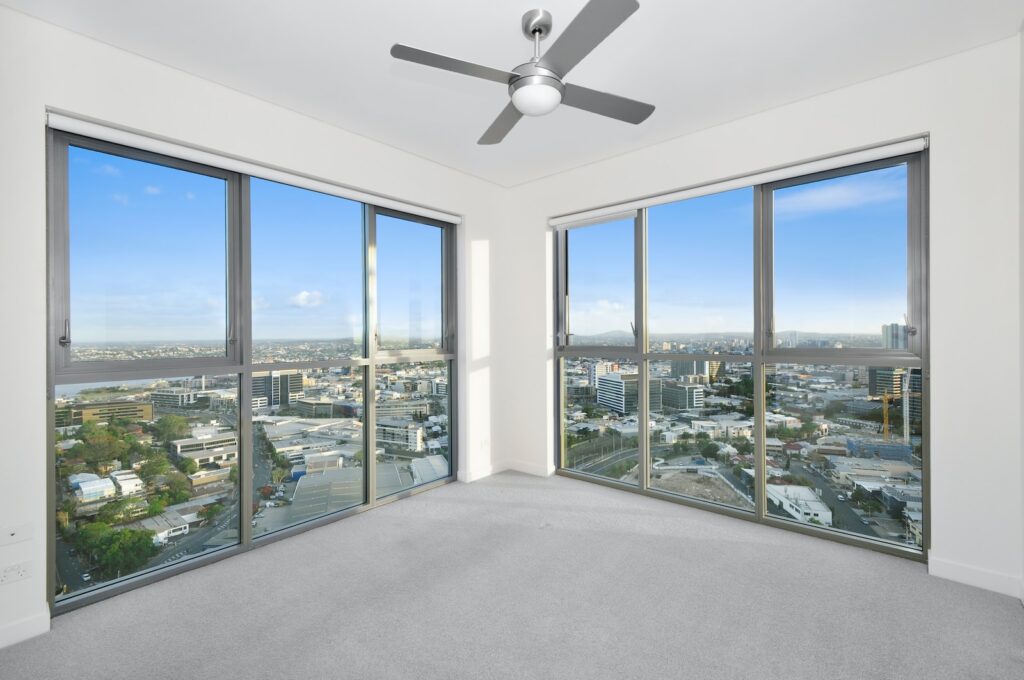Are you tired of the standard window blinds and looking for creative ways to cover your windows? There are plenty of options on the market that can add interest and style to your space while providing privacy and light control. In this article, we will explore some unique and affordable ways to cover your windows without traditional blinds. From curtains to window films, we’ve got you covered!

Windows are an essential element in our homes, but sometimes we need to cover them for privacy, light control, and decoration purposes. Blinds are the most common way to cover windows, but they are not the only option. In this article, we will explore different ways to cover windows without using blinds.
1. Curtains
Curtains are a popular alternative to blinds. They come in a variety of colors, patterns, and fabrics, allowing you to personalize your space. Curtains can be easily installed, and they are available in different lengths to fit any window size.
When choosing curtains, it is important to consider the fabric’s thickness. Thick fabrics like velvet or linen can provide better insulation and light control, while sheer fabrics like chiffon or voile can add a touch of elegance and filter natural light.
2. Window Film
Window film is a modern and inexpensive option for covering windows. It is a self-adhesive film that can be easily applied to any window, providing privacy and reducing glare. Window film comes in different designs, including frosted, stained glass, and patterned.
Window film is a great option for renters or people who don’t want to damage their windows with nails or screws. It is also easy to remove and replace, allowing you to change your window’s look frequently.
3. Shutters
Shutters are a classic window covering that can add a touch of elegance to any room. They come in different materials, including wood, vinyl, and composite. Shutters are installed inside the window frame, providing a clean and streamlined look.
Shutters can be easily adjusted to control the amount of light and privacy in the room. They are also durable and easy to clean, making them a great option for high-traffic areas.
4. Drapes
Drapes are another option to cover windows without blinds. They are similar to curtains but are usually made of heavier fabrics like velvet or silk. Drapes can add a touch of luxury to any room and are available in different lengths and colors.
Drapes are usually installed on a rod or track and can be easily opened and closed to control the amount of light entering the room. They are also great for insulation, making them a great option for colder climates.
5. Roman Shades
Roman shades are a popular alternative to blinds. They are made of fabric and fold up as they are raised, providing a clean and streamlined look. Roman shades are available in different fabrics, including cotton, linen, and silk.
Roman shades can be easily installed on the window frame or inside the window recess. They are also available in different styles, including flat, hobbled, and balloon, allowing you to personalize your space.
6. Vertical Garden
Vertical gardens are a unique way to cover windows while adding a touch of nature to your space. They are made of plants that are attached to a vertical surface, like a wall or a window. Vertical gardens can provide natural insulation and improve air quality in your home.
Vertical gardens require regular maintenance, including watering, pruning, and fertilizing. They are also great for small spaces and can be easily customized to fit any window size.
7. Bamboo Shades
Bamboo shades are a natural way to cover windows without blinds. They are made of bamboo or other natural materials, providing a rustic and eco-friendly look. Bamboo shades are available in different colors and textures, allowing you to personalize your space.
Bamboo shades are easy to install and can be easily adjusted to control the amount of light entering the room. They are also durable and easy to clean, making them a great option for high-traffic areas.
8. Stained Glass
Stained glass is a beautiful way to cover windows while adding a touch of art to your space. Stained glass is made of colored glass pieces that are arranged in a pattern and held together by lead or copper strips. Stained glass can provide privacy and filter natural light.
Stained glass requires professional installation and can be expensive. It is also fragile and requires regular maintenance, including cleaning and polishing.
9. Window Scarf
Window scarf is a simple and inexpensive way to cover windows without blinds. It is a long piece of fabric that is draped over a rod or a track, providing a soft and elegant look. Window scarfs are available in different colors and fabrics, allowing you to personalize your space.
Window scarfs are easy to install and can be easily adjusted to control the amount of light entering the room. They are also great for small spaces and can be easily customized to fit any window size.
10. Benefits of Covering Windows Without Blinds
Covering windows without blinds can provide several benefits, including:
- Personalization: Using curtains, drapes, or shades can add a personal touch to your space and reflect your style.
- Light Control: Different window coverings can provide different levels of light control, allowing you to adjust the amount of natural light entering your room.
- Privacy: Window coverings can provide privacy and block outside views.
- Insulation: Some window coverings like shutters, drapes, and bamboo shades can provide insulation, reducing your energy bills.
- Eco-Friendly: Using natural materials like bamboo or incorporating vertical gardens can add an eco-friendly element to your space.
Conclusion
Blinds are not the only option to cover windows. There are several alternatives, including curtains, window film, shutters, drapes, roman shades, vertical gardens, bamboo shades, stained glass, and window scarfs. Each option has its own benefits and drawbacks, allowing you to choose the best option for your space. Remember to consider factors like light control, privacy, insulation, and personalization when choosing your window covering.
Frequently Asked Questions
Here are some commonly asked questions about covering windows without blinds.
What are some alternatives to blinds for covering windows?
There are several alternatives to blinds for covering windows. One option is to use curtains or drapes. These can be made from a variety of fabrics and come in a range of styles. Another option is to use shades. These can be made from natural materials like bamboo or from synthetic materials like vinyl. You could also consider using shutters or screens, which can provide privacy while still allowing light to filter through.
How can I make my own curtains or drapes to cover my windows?
Making your own curtains or drapes can be a fun and rewarding DIY project. To get started, you’ll need to measure your windows to determine the amount of fabric you’ll need. You’ll also want to choose a fabric that complements your decor and provides the level of privacy you desire. Once you have your fabric, you’ll need to cut it to size, hem the edges, and add any desired embellishments like tassels or fringe. Finally, you’ll need to hang your curtains or drapes using a rod or other hardware.
What are some tips for using shades to cover windows?
If you’re using shades to cover your windows, there are a few tips to keep in mind. First, consider the type of material the shades are made from. Natural materials like bamboo may provide a more organic look, while synthetic materials like vinyl may be more durable. You’ll also want to consider the style of the shades – for example, Roman shades can provide a more formal look, while roller shades are more minimalist. Finally, make sure to measure your windows carefully to ensure a proper fit.
Can I use curtains or drapes with shades for added privacy?
Absolutely! Combining curtains or drapes with shades can be a great way to add extra privacy to your windows. Simply hang the curtains or drapes over the shades, and you’ll have the option to block out more light and prying eyes. You could even layer multiple curtains or drapes of different lengths and textures for a more visually interesting look.
What are the benefits of using shutters or screens to cover windows?
Shutters and screens can be a great option for covering windows, as they offer several benefits. For one, they provide a classic and timeless look that can enhance the style of any room. They’re also incredibly versatile – you can adjust the slats or panels to let in as much or as little light as you like. Finally, shutters and screens are extremely durable and can last for many years with proper care and maintenance.
Removable Blackout Window Covering from IKEA – Cheap, Easy, No Film, Shade, or Curtain!
In conclusion, there are many creative ways to cover your windows without using traditional blinds. Whether you want to add a touch of elegance or a pop of color to your space, there are various options available that can help you achieve your desired look.
From using sheer curtains to layering fabrics, you can create a cozy and inviting atmosphere in your home that will also provide privacy and light control. By exploring different design techniques and experimenting with different materials, you can discover a unique and stylish window covering solution that suits your personal taste and needs.
So if you’re looking for an alternative to traditional blinds, don’t be afraid to get creative! With a little bit of imagination and some DIY skills, you can transform your windows into a beautiful and functional feature of your home.


